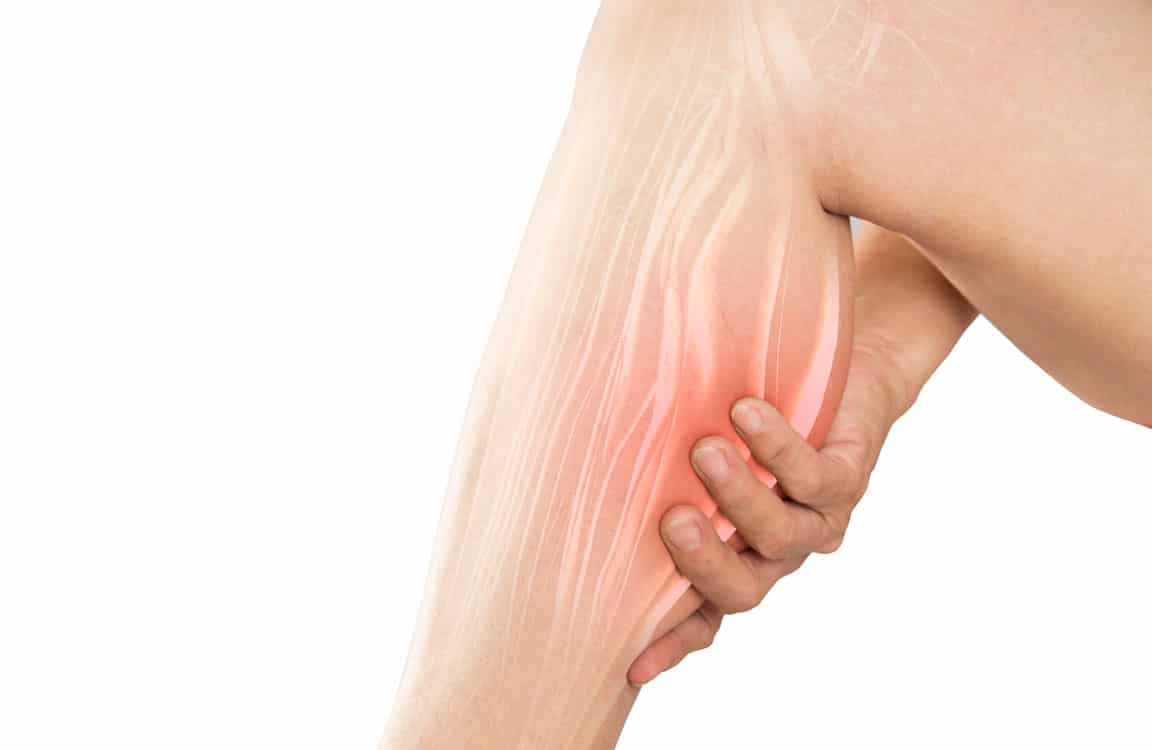What Is The Importance Of Antispasmodic Medications In Treating Muscle Cramps?

Muscle cramps are a common condition that can cause significant discomfort and impact daily functioning.
Antispasmodic medications have been widely used in the treatment of muscle cramps, aiming to provide relief and improve overall quality of life.
This article aims to explore the importance of antispasmodic medications in treating muscle cramps by examining their mechanism of action, ability to alleviate pain and discomfort, and potential benefits in managing underlying conditions.
Additionally, potential side effects and precautions associated with antispasmodic medications will be discussed, as well as alternative treatments and complementary therapies that may be considered.
It is important to consult with a healthcare professional before initiating any treatment, as they can provide guidance on the most appropriate course of action based on individual needs and considerations.
Understanding the role and significance of antispasmodic medications can contribute to informed decision-making and improved management of muscle cramps.
Key Takeaways
- Antispasmodic medications play a crucial role in treating muscle cramps by providing relief from spasms and reducing muscle contractions.
- While antispasmodic medications can be effective in managing muscle cramps, they may also have side effects that need to be considered and monitored.
- Lifestyle modifications, such as staying hydrated, stretching, and avoiding triggers, are important for managing muscle cramps alongside medication.
- Consulting with a healthcare professional is essential for proper diagnosis, tailored treatment plans, and monitoring for adverse reactions or changes in health.
Understanding Muscle Cramps
Muscle cramps are a common and often painful condition that can significantly impact an individual’s quality of life. Understanding the underlying causes of muscle cramps is essential in developing effective treatment strategies.
Muscle cramps can occur due to various reasons, such as muscle fatigue, dehydration, electrolyte imbalances, and certain medical conditions. Antispasmodic medications play a crucial role in managing muscle cramps by helping to relax the muscles and relieve the associated pain. These medications work by blocking the signals that cause muscle contractions, providing relief and allowing the affected individual to resume their normal activities.
However, it is important to note that antispasmodic medications should be used under medical supervision, as their misuse or overuse may lead to adverse effects. In addition to medication, prevention strategies such as staying hydrated, maintaining proper electrolyte balance, and stretching regularly can also help reduce the frequency and severity of muscle cramps.
How Antispasmodic Medications Work
Antispasmodic medications are effective in alleviating muscle cramps by targeting the underlying mechanisms that cause involuntary muscle contractions. These medications work by relaxing the muscles and reducing the intensity and frequency of spasms.
Here are three key points to understand how antispasmodic medications work:
- Mechanism of action: Antispasmodic medications act on the nervous system to inhibit the signals that cause muscle contractions. They work by blocking certain neurotransmitters or by altering the sensitivity of the muscle cells to these signals.
- Antispasmodic drug interactions: It is important to be aware of potential drug interactions when taking antispasmodic medications. Some medications, such as sedatives or opioids, can enhance the sedative effects of antispasmodics, leading to increased drowsiness or impairment.
- Dosage recommendations: The appropriate dosage of antispasmodic medications may vary depending on the individual and the severity of the muscle cramps. It is recommended to start with the lowest effective dose and adjust as needed under the guidance of a healthcare professional.
By understanding how antispasmodic medications work, individuals can make informed decisions about their treatment options and ensure the safe and effective use of these medications.
Alleviating Pain and Discomfort
Alleviating pain and discomfort associated with involuntary muscle contractions can be achieved through various methods and interventions. One effective approach is the use of antispasmodic medications. These medications work by targeting the underlying causes of muscle cramps, such as muscle spasm or nerve hyperexcitability. By blocking the action of certain neurotransmitters, antispasmodic medications help relax the muscles and reduce the intensity and frequency of cramps. This not only alleviates discomfort but also promotes overall well-being. Additionally, antispasmodic medications can provide relief from other symptoms that often accompany muscle cramps, such as muscle stiffness and soreness. It is important to note that antispasmodic medications should be used under the guidance of a healthcare professional, as they may have potential side effects and interactions with other medications.
Improving Daily Functioning
This discussion will focus on the subtopic of improving daily functioning. Specifically, it will address two main areas: enhancing mobility and restoring normal muscle function.
Enhancing mobility is crucial for individuals to perform their daily activities with ease and independence. It involves improving the ability to move, walk, and engage in physical activities without limitations. This can be achieved through various interventions such as physical therapy, assistive devices, and exercise programs.
Restoring normal muscle function is equally important for individuals to regain their ability to move and engage in physical activities. Muscle function can be affected by various factors such as injury, illness, or aging. Rehabilitation techniques, including strength training, stretching, and range of motion exercises, can help restore muscle function and improve overall physical performance.
By addressing both mobility and muscle function, individuals can enhance their daily functioning and improve their quality of life. These interventions not only promote independence but also contribute to overall health and well-being.
Enhancing Mobility
Enhancing mobility can be achieved through the use of antispasmodic medications, which help to relax and relieve muscle cramps. Muscle cramps can significantly limit mobility and hinder daily activities. By targeting the underlying cause of muscle cramps, antispasmodic medications can effectively prevent injuries and promote healing.
When muscles are in a state of constant contraction, they become more prone to strains, tears, and other injuries. By relieving muscle cramps, antispasmodic medications allow individuals to move more freely and without discomfort, thus reducing the risk of further injury.
Additionally, antispasmodic medications can also help in promoting healing by reducing muscle inflammation and allowing damaged tissues to recover. Overall, by enhancing mobility and preventing injuries, antispasmodic medications play a crucial role in improving the overall quality of life for individuals suffering from muscle cramps.
Restoring Normal Muscle Function
Restoring normal muscle function is crucial for individuals experiencing muscle cramps as it allows them to regain their ability to perform daily activities without discomfort or limitations. By addressing the underlying cause of muscle cramps, antispasmodic medications play a vital role in restoring muscle flexibility. This is achieved by reducing muscle spasms and relieving the tension that leads to cramping.
Additionally, antispasmodic medications help prevent future cramps by inhibiting abnormal muscle contractions and promoting relaxation. This not only alleviates the immediate symptoms but also helps to prevent the recurrence of muscle cramps.
By restoring normal muscle function and preventing future cramps, individuals can regain their mobility and engage in physical activities with ease. This promotes a sense of well-being and enhances overall quality of life.
Managing Underlying Conditions
Managing underlying conditions is crucial in the treatment of muscle cramps as it helps to address the root causes and alleviate the symptoms, thereby providing long-term relief and improving the overall quality of life for individuals experiencing muscle cramps.
Antispasmodic medications play a significant role in managing underlying conditions by managing symptoms and preventing recurrence. These medications work by relaxing the muscles and reducing the intensity and frequency of muscle spasms.
By targeting the underlying cause of muscle cramps, such as muscle fatigue, dehydration, electrolyte imbalances, or nerve damage, antispasmodic medications help to restore normal muscle function and prevent future episodes.
Additionally, these medications can also provide relief from associated symptoms like pain and discomfort. However, it is important to note that antispasmodic medications should be taken under the guidance of a healthcare professional to ensure appropriate dosage and to minimize potential side effects.
Potential Side Effects and Precautions
This paragraph will discuss the potential side effects and precautions associated with antispasmodic medications.
Common side effects of these medications may include drowsiness, dry mouth, blurred vision, and dizziness.
It is important for individuals taking antispasmodic medications to be aware of these side effects and to exercise caution when engaging in activities that require alertness.
Additionally, certain precautions should be taken, such as avoiding alcohol and other sedating substances, and informing healthcare professionals of any existing medical conditions or medications being taken.
Common Side Effects
Antispasmodic medications commonly exhibit side effects that should be taken into consideration when prescribing them for the treatment of muscle cramps. These side effects can vary in severity and may include drowsiness, dizziness, dry mouth, and blurred vision. It is important for healthcare professionals to inform patients about these potential adverse effects to ensure they are aware of the possible outcomes of taking antispasmodic medications.
To manage cramp triggers and reduce the frequency and severity of muscle cramps, lifestyle modifications can be implemented. These modifications may include staying hydrated, stretching before and after physical activity, maintaining a balanced diet, and avoiding excessive caffeine and alcohol consumption. By incorporating these lifestyle changes, individuals may experience a decrease in muscle cramps and find relief without solely relying on antispasmodic medications.
- Drowsiness: This side effect can affect daily activities and should be considered when prescribing antispasmodic medications.
- Dizziness: Patients may experience lightheadedness or unsteadiness, which can impact their quality of life.
- Dry mouth and blurred vision: These side effects can cause discomfort and may require additional management strategies.
Safety Considerations
Safety considerations should be carefully evaluated when prescribing medications for the treatment of muscle cramps to ensure the well-being and optimal outcomes of patients.
Antispasmodic medications, while effective in relieving muscle cramps, may have potential side effects that need to be taken into account. These medications work by relaxing the muscles and reducing spasms, but they can also affect other parts of the body. Common side effects include drowsiness, dizziness, dry mouth, and blurred vision.
Additionally, antispasmodic medications may interact with other medications or medical conditions, so it is important to assess the patient’s medical history and current medications before prescribing them.
It is crucial to monitor patients for any adverse reactions or changes in health while on antispasmodic medications and adjust the treatment plan accordingly.
By considering safety considerations and potential side effects, healthcare professionals can ensure the safe and effective use of antispasmodic medications in treating muscle cramps.
Alternative Treatments and Complementary Therapies
Alternative treatments and complementary therapies offer additional options for managing muscle cramps, allowing individuals to explore a diverse range of approaches beyond antispasmodic medications.
These alternative therapies often focus on natural remedies that aim to alleviate muscle cramps through various means. Some individuals find relief through practices such as acupuncture or acupressure, which involve stimulating specific points on the body to release tension and promote relaxation.
Others may turn to herbal remedies, such as magnesium supplements or herbal teas, which are believed to have muscle-relaxing properties.
Additionally, techniques like heat therapy, such as hot compresses or warm baths, and stretching exercises may also be used as alternative treatments to help reduce the occurrence of muscle cramps.
While antispasmodic medications remain a commonly prescribed treatment for muscle cramps, exploring alternative therapies may provide individuals with additional options for managing their symptoms.
Consulting with a Healthcare Professional
Consulting with a healthcare professional is crucial when dealing with any health concern, including muscle cramps. Seeking medical advice allows for a proper diagnosis to be made, ensuring that the underlying cause of the muscle cramps is identified. This is important because different causes may require different treatment approaches.
Additionally, a healthcare professional can help develop a tailored treatment plan that addresses the specific needs and concerns of the individual, maximizing the effectiveness of the treatment and minimizing potential side effects.
Seeking Medical Advice
To seek appropriate medical advice for the treatment of muscle cramps, individuals can consult with a healthcare professional who can provide guidance on the potential benefits of antispasmodic medications. Medical consultation is essential as it allows individuals to discuss their symptoms and medical history with a qualified professional who can recommend suitable treatment options. Antispasmodic medications are commonly prescribed for muscle cramps as they work by relaxing the muscles and reducing spasms. These medications can help alleviate the discomfort and pain associated with muscle cramps, allowing individuals to resume their daily activities. It is important to note that antispasmodic medications should only be taken under the supervision of a healthcare professional to ensure their safe and effective use. The following table highlights the potential benefits of antispasmodic medications in treating muscle cramps:
| Benefits of Antispasmodic Medications |
|---|
| Relaxation of muscles |
| Reduction in muscle spasms |
| Alleviation of pain |
Importance of Proper Diagnosis and Treatment Plan
When seeking medical advice for muscle cramps, it is crucial to understand the importance of proper diagnosis and treatment planning.
A proper diagnosis involves identifying the underlying cause of the muscle cramps, which can range from dehydration and electrolyte imbalances to nerve damage or chronic conditions like fibromyalgia. Without a proper diagnosis, the treatment of muscle cramps may be ineffective or even exacerbate the condition.
Once a diagnosis is established, a treatment plan can be developed, tailored to the specific needs of the individual. This may include lifestyle modifications, such as hydration and exercise, as well as the use of antispasmodic medications to alleviate muscle cramps.
The importance of a treatment plan lies in its ability to provide targeted relief and improve the individual’s quality of life.
- Customized treatment approach
- Alleviation of symptoms
- Improved quality of life.
Frequently Asked Questions
Are antispasmodic medications the only treatment option for muscle cramps?
Antispasmodic medications are not the only treatment option for muscle cramps. Alternative treatments and natural remedies can also be used to alleviate muscle cramps, providing individuals with a range of options for managing this condition.
Can antispasmodic medications be used to prevent muscle cramps?
Antispasmodic medications can be used as a preventive measure for muscle cramps, although their effectiveness varies. Other prevention methods, such as stretching, hydration, and avoiding triggers, along with alternative treatments like physical therapy, may also be considered.
What are the potential side effects of antispasmodic medications?
The potential side effects of antispasmodic medications include dizziness, drowsiness, dry mouth, blurred vision, and urinary retention. These medications should be evaluated for their effectiveness and potential risks before being used for muscle cramp treatment.
How long does it take for antispasmodic medications to start working?
The effectiveness of antispasmodic medications varies depending on the individual and the specific medication being used. The dosage of antispasmodic medication can also affect how quickly it starts working.
Are antispasmodic medications safe to use during pregnancy or while breastfeeding?
Safety considerations during pregnancy and breastfeeding are important when using antispasmodic medications for muscle cramps. It is advisable to consult a healthcare professional for alternative treatment options that are safe during these sensitive periods.









